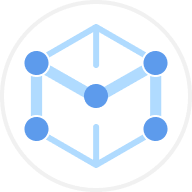Measurable Data Token (MDT) – це проєкт, спрямований на створення економіки даних, яка дозволяє користувачам ділитися, обмінюватися та монетизувати інформацію. Як децентралізована економіка даних, Measurable Data Token фокусується на тому, щоб зробити торгівлю даними більш етичною, заснованою на згоді та прозорості. Унікальна торгова екосистема використовує технологію блокчейн, щоб з'єднати продавців і покупців даних в рамках незмінної екосистеми.
Що таке Measurable Data Token
Measurable Data Token – це проєкт на основі Ethereum, який має на меті допомогти користувачам отримати належну компенсацію за дані, якими вони діляться з покупцями. Він фокусується на відсіканні корпорацій, які використовують дані користувачів для отримання прибутку. Проєкт має на меті змінити статус-кво, повернувши владу в руки користувачів.
Обмін даними винагороджується за допомогою токенів MDT, що сприяє більш справедливому розподілу і підвищує цінність нативного токена.
Команда Measurable Data Token
Ідея проєкту Measurable Data Token належить Хітерму Хуангу, співзасновнику MailTime. Хуанг також створив Measurable Foundation, фірму, відповідальну за підтримку MDT. Окрім нього, команда Measurable Data Token також може похвалитися численними експертами з блокчейну та інтелектуального аналізу даних, включаючи інженера-програміста Вінга Чана, старшого інженера-програміста Метта Лунга та інших.
Як працює Measurable Data Token
Measurable Data Token залежить від прозорості. Покупці даних розміщують захищені запити через блокчейн. Постачальники даних викликають певні точки даних зі своїх сховищ, подібно до гаманців даних, використовуючи свій публічний ключ, і надсилають їх покупцям. Покупці мають доступ лише до тих даних, якими хоче поділитися продавець.
Специфічні для екосистеми смартконтракти виконують умови, визначені для всіх транзакцій, пов'язаних з даними. Деталі смартконтракту включають розмірність даних, відкритий ключ користувача, відсоток винагороди тощо. Оплата за дані відбувається лише тоді, коли умови смартконтракту виконані, а винагорода виплачена відповідно до коду.
Нативний токен Measurable Data Token: MDT
MDT є нативним токеном екосистеми Measurable Data Token. MDT – це ERC-20 токен, сумісний з більшістю холодних і гарячих гаманців. Токени мають обмеження пропозиції в 1 мільярд, які виділяються як заохочення і винагороди. Оскільки існує жорстке обмеження на пропозицію, очікується, що модель економіки токенів перейде від дезінфляційної до дефляційної, оскільки деякі токени часто губляться між гаманцями.
Варіанти використання MDT
MDT є важливим компонентом екосистеми Measurable Data Token. Його основне призначення – винагороджувати користувачів за обмін даними, по суті, функціонуючи як форма оплати. Наприклад, токени MDT заохочують користувачів, які продають свої дані ігровим та іншим компаніям, щоб допомогти їм з аналізом ринку.
Крім того, токени MDT мають кілька інших варіантів використання, включаючи можливість полегшити транзакції даних в екосистемі, роль в управлінні платформою, а також можливість заробляти винагороди за стейкінг, пропонуючи ліквідність на основі MDT.
Розподіл MDT
Токени MDT розподіляються наступним чином:
- 24% - команді MailTime
- 11% - радникам та раннім інвесторам
- 15% - фонду зростання
- 35% на події розподілу токенів, такі як аірдропи
- 15% на попередній продаж
Measurable Data Token (MDT) і майбутнє економіки, керованої блокчейном
Ринки даних мають вирішальне значення, оскільки вони дозволяють користувачам зв'язуватися з бізнесом, допомагаючи їм краще розуміти ринки. Але сучасний процес сильно централізований. Measurable Data Token має на меті змінити все це, пропонуючи децентралізований ринок даних, який є достатньо інноваційним, щоб перетворитися на нову економіку.
















